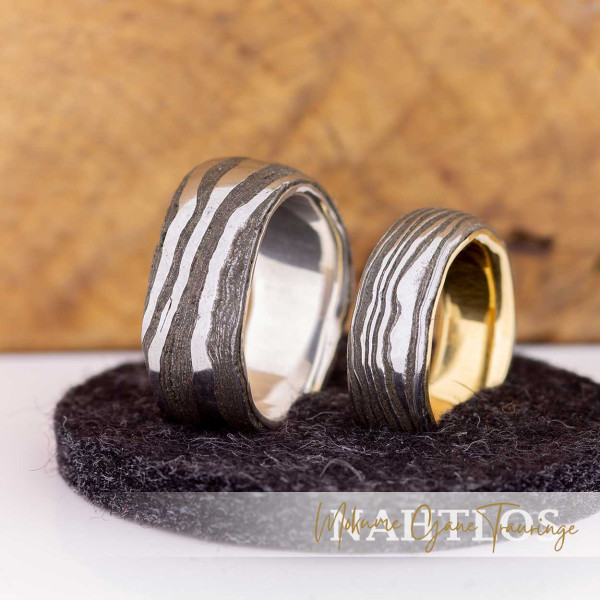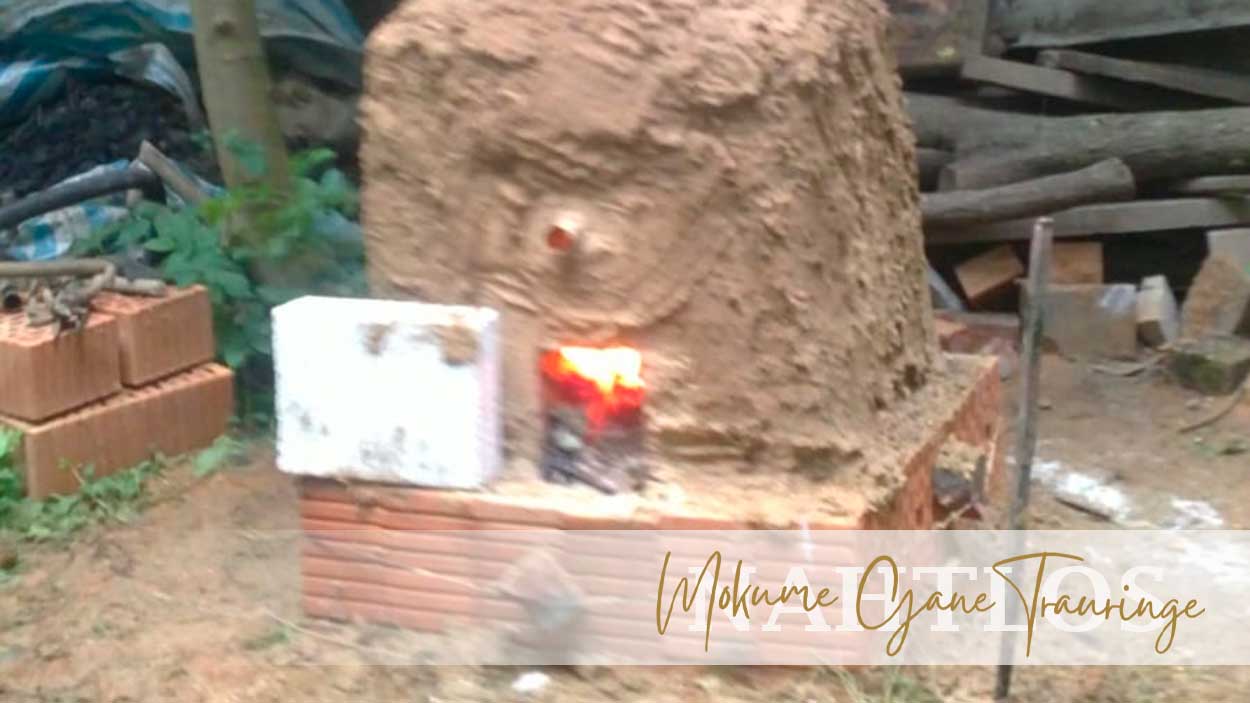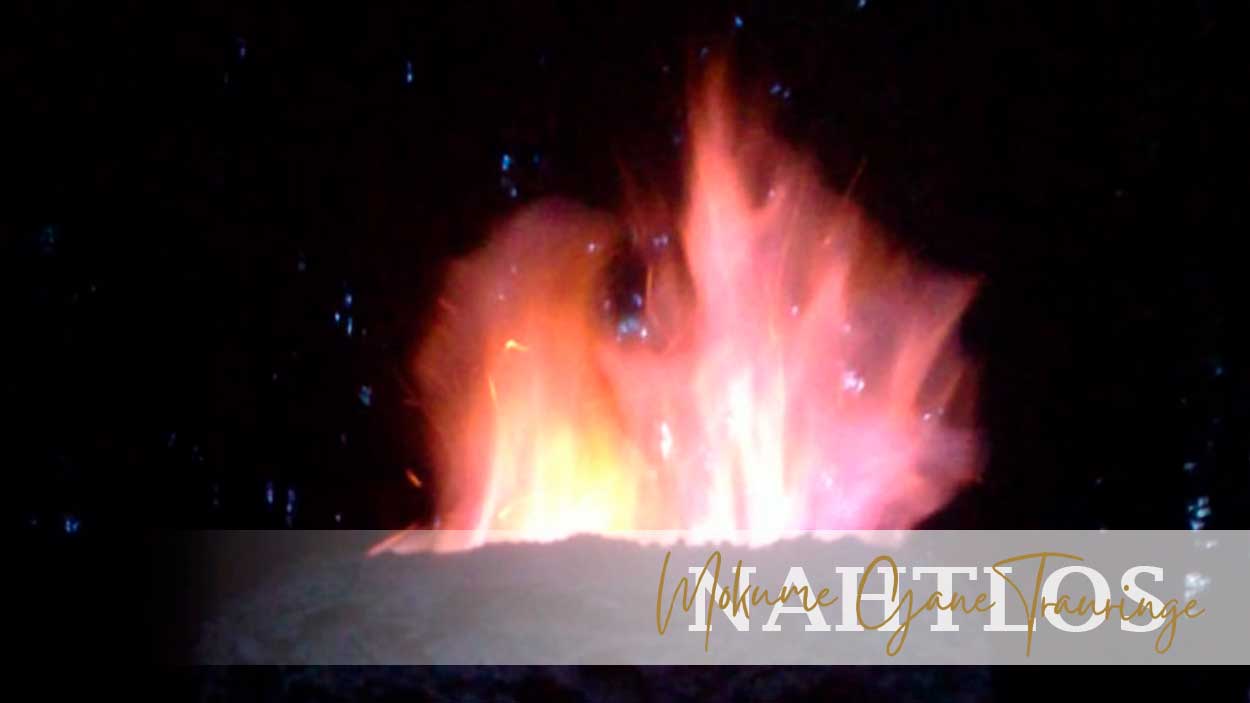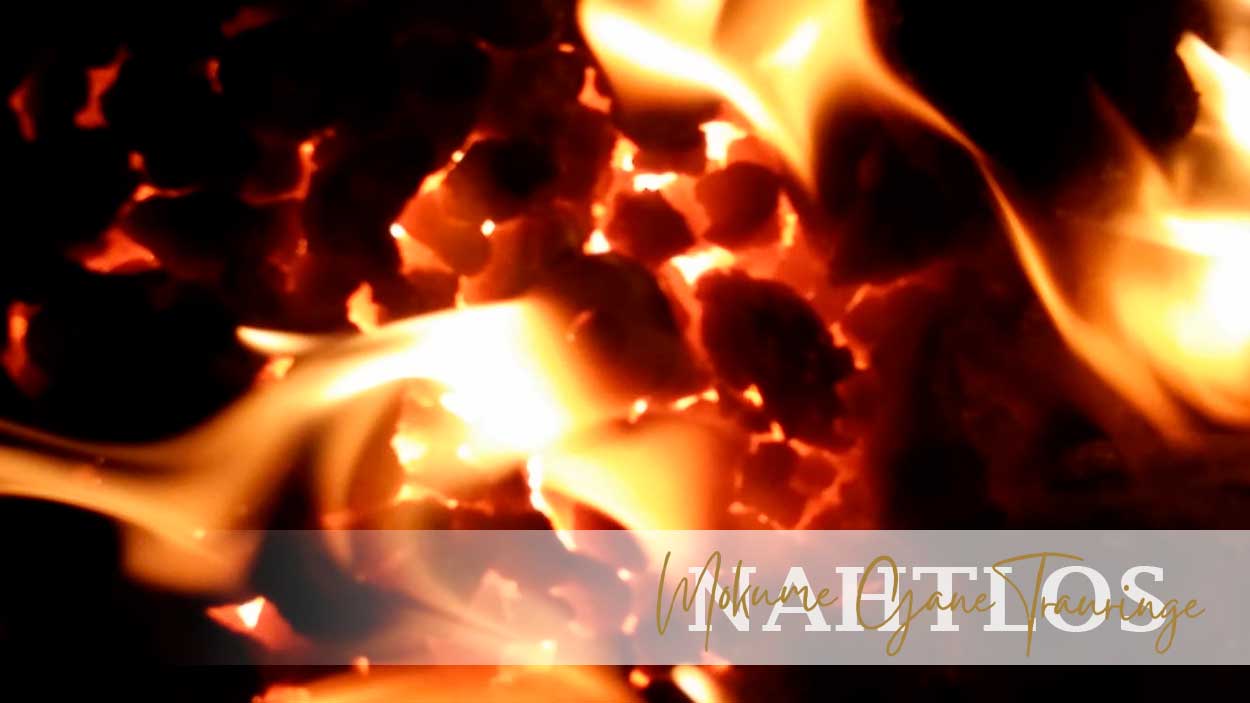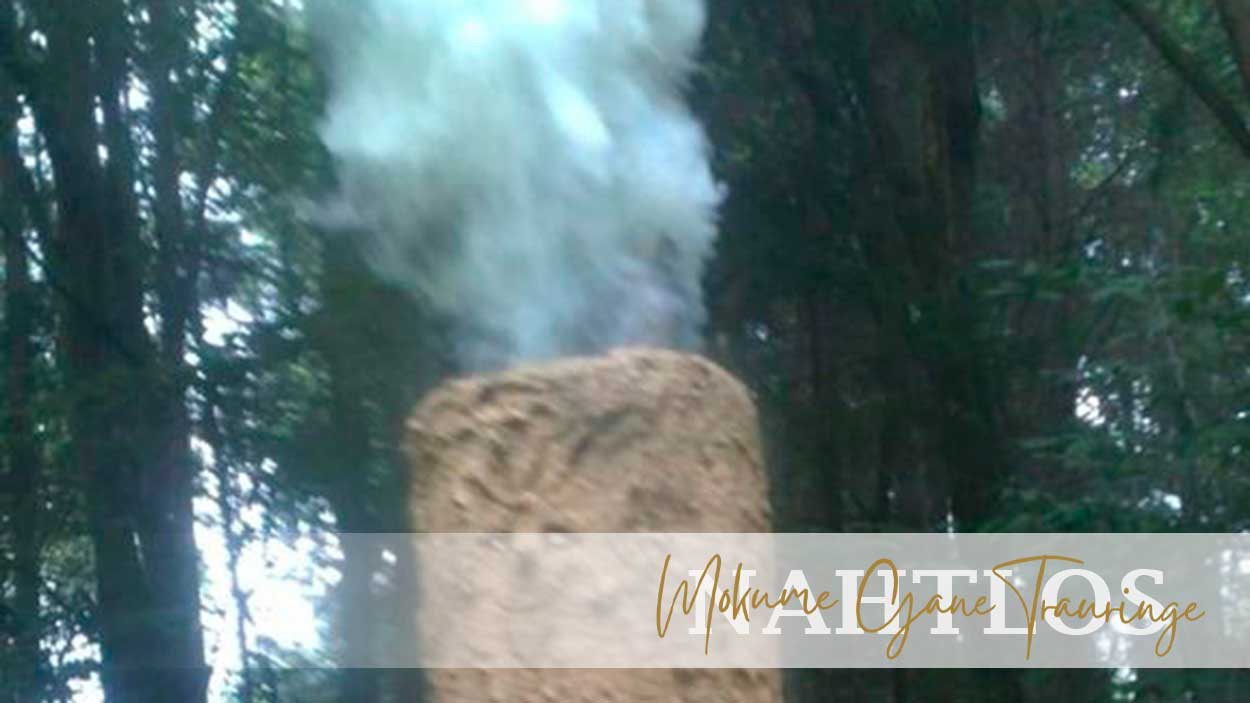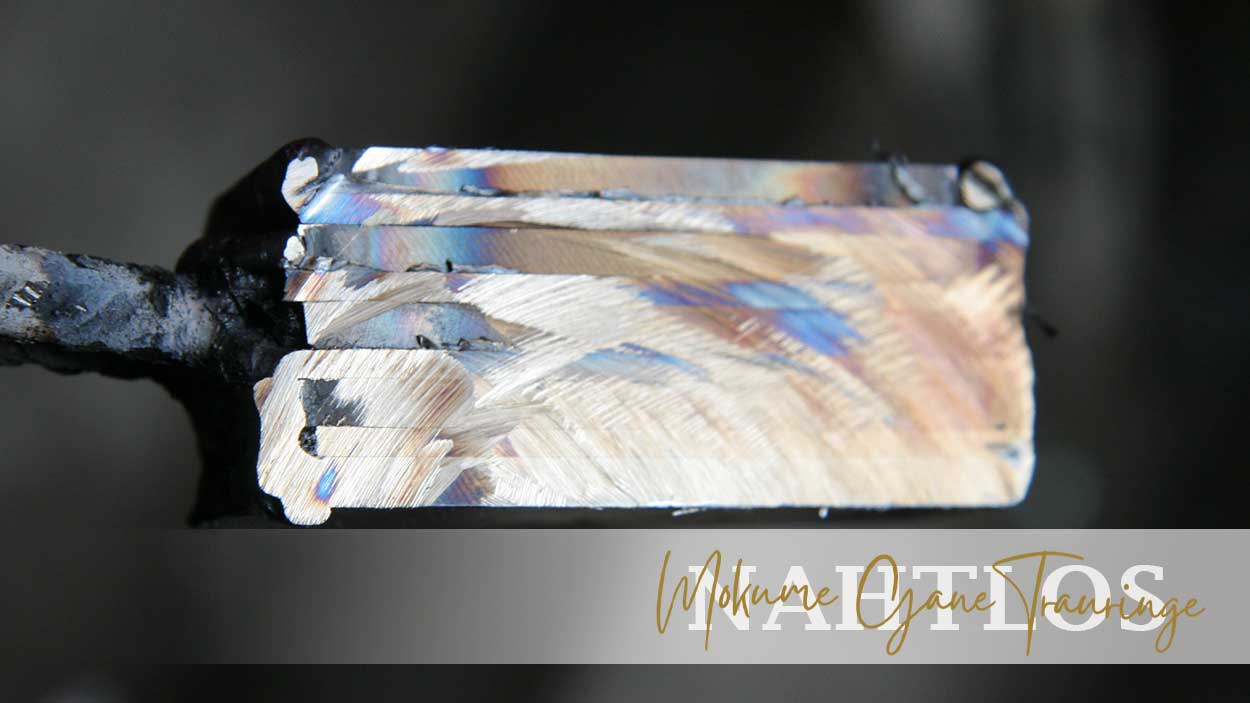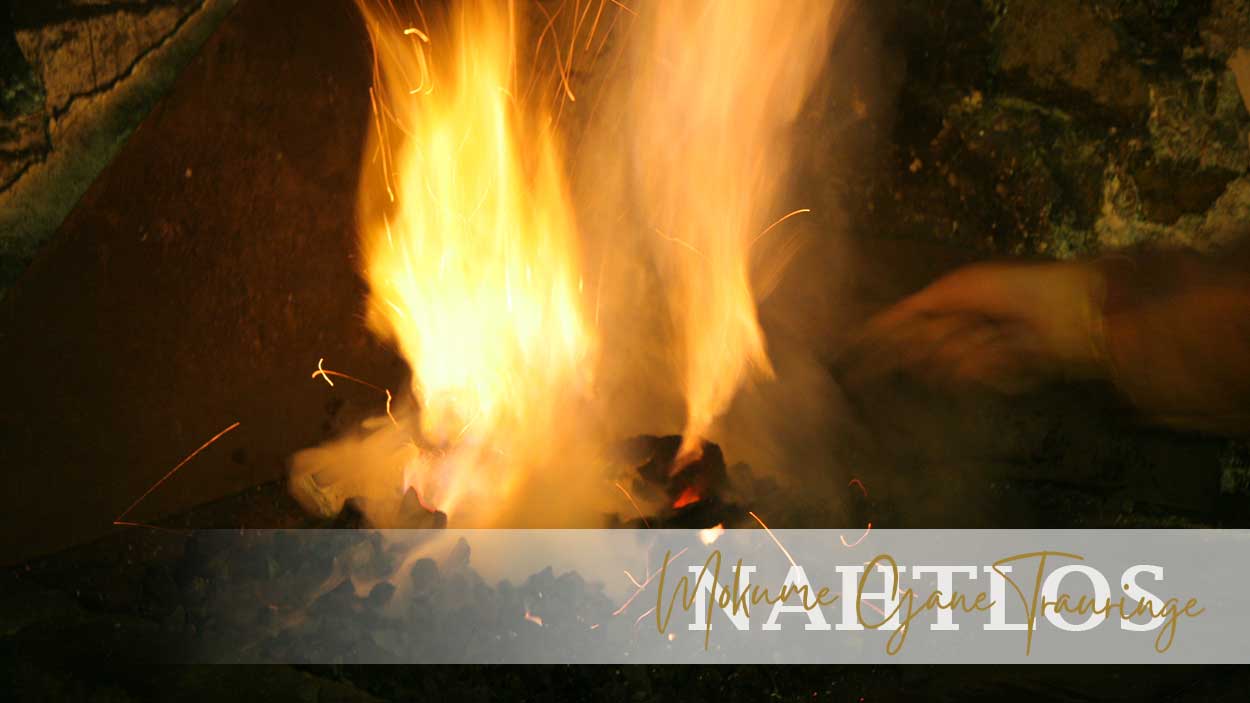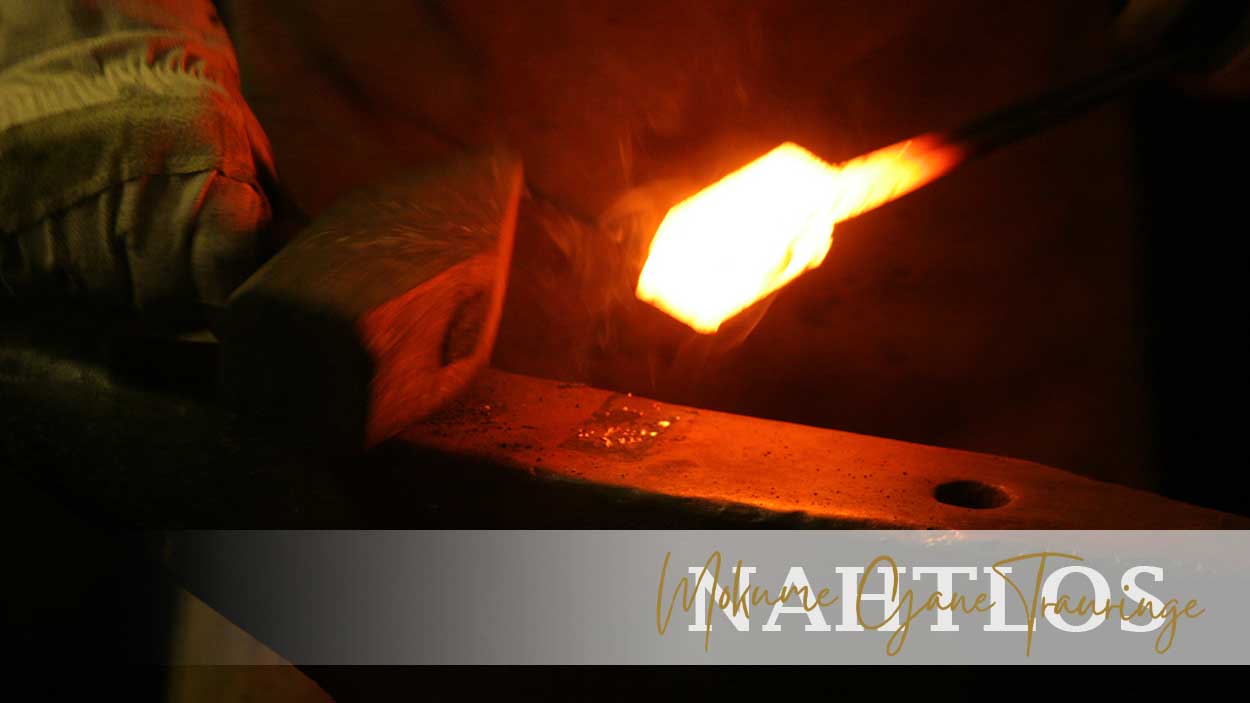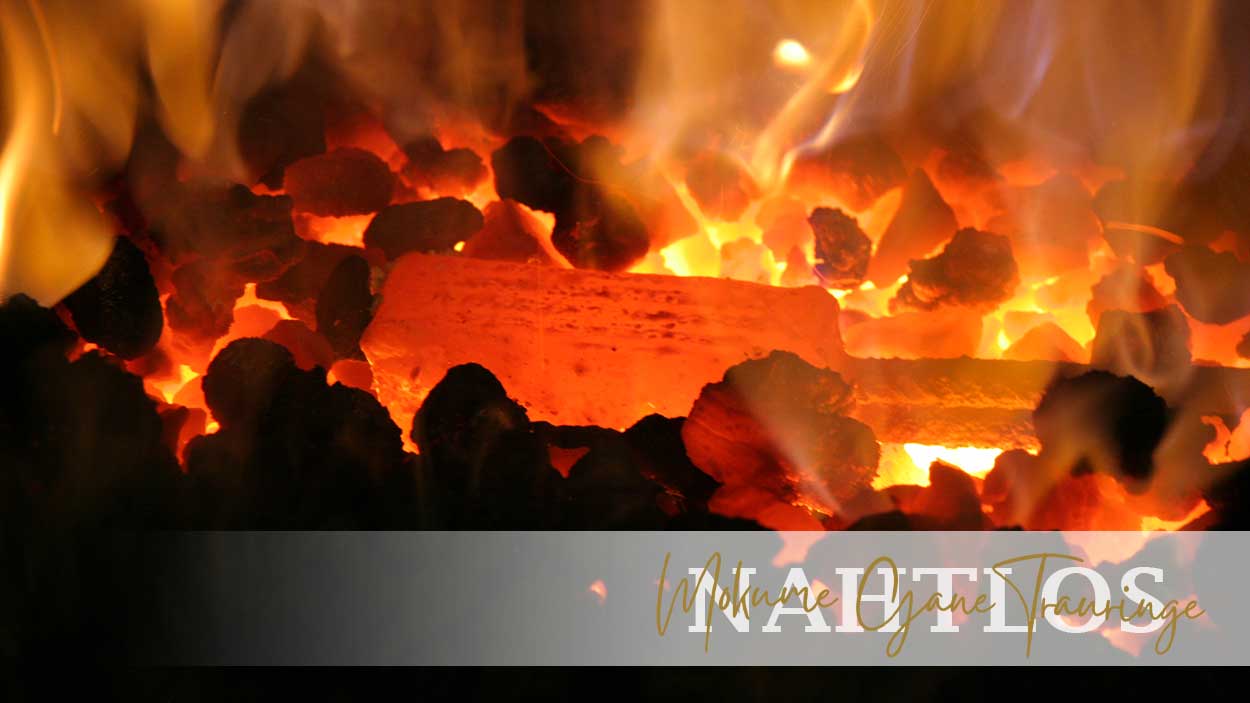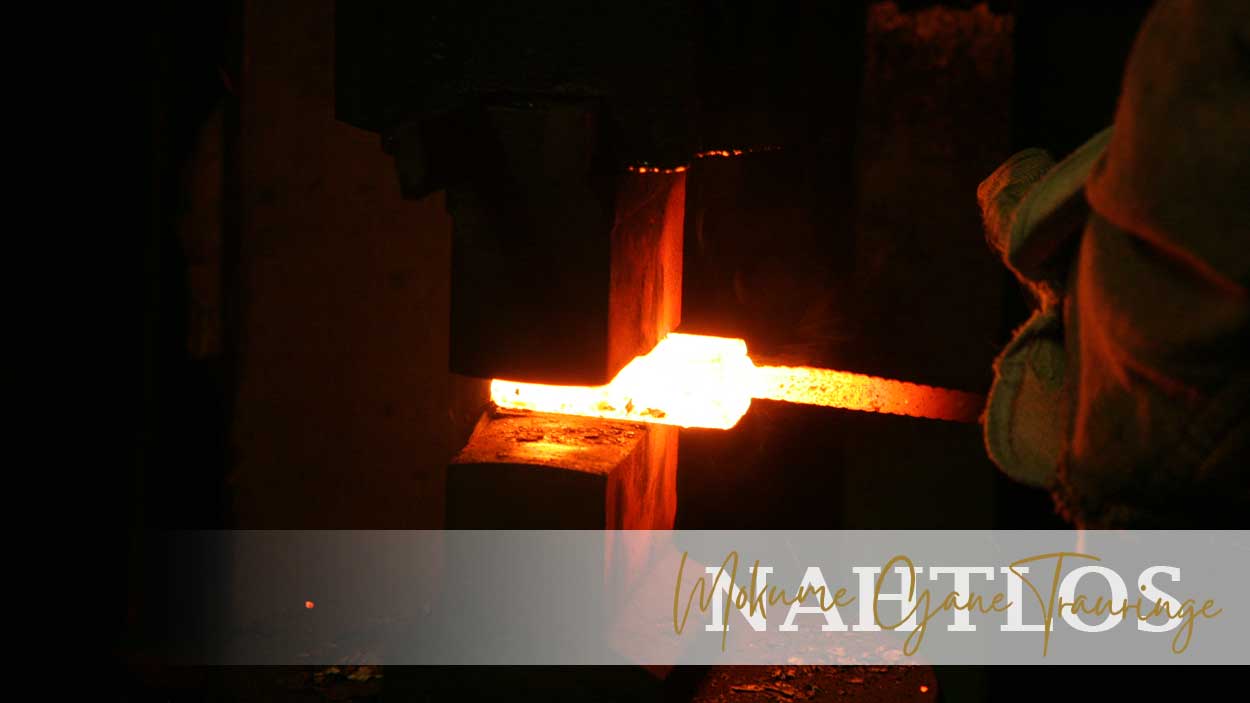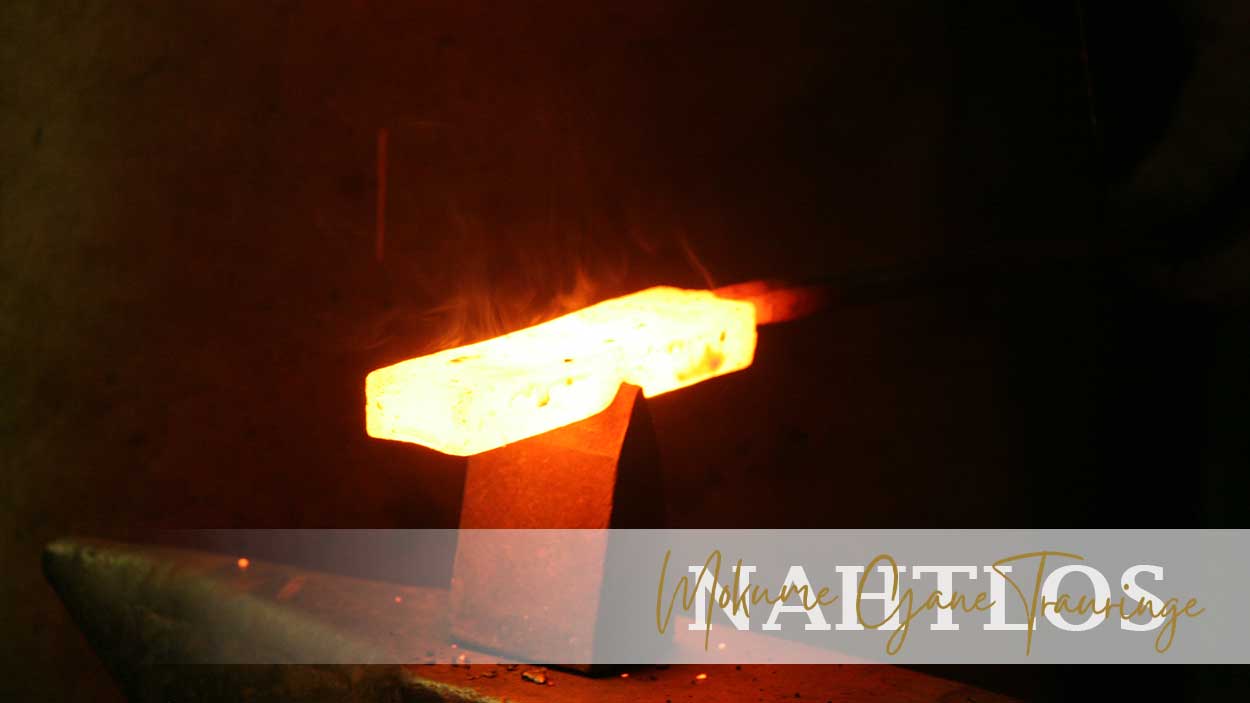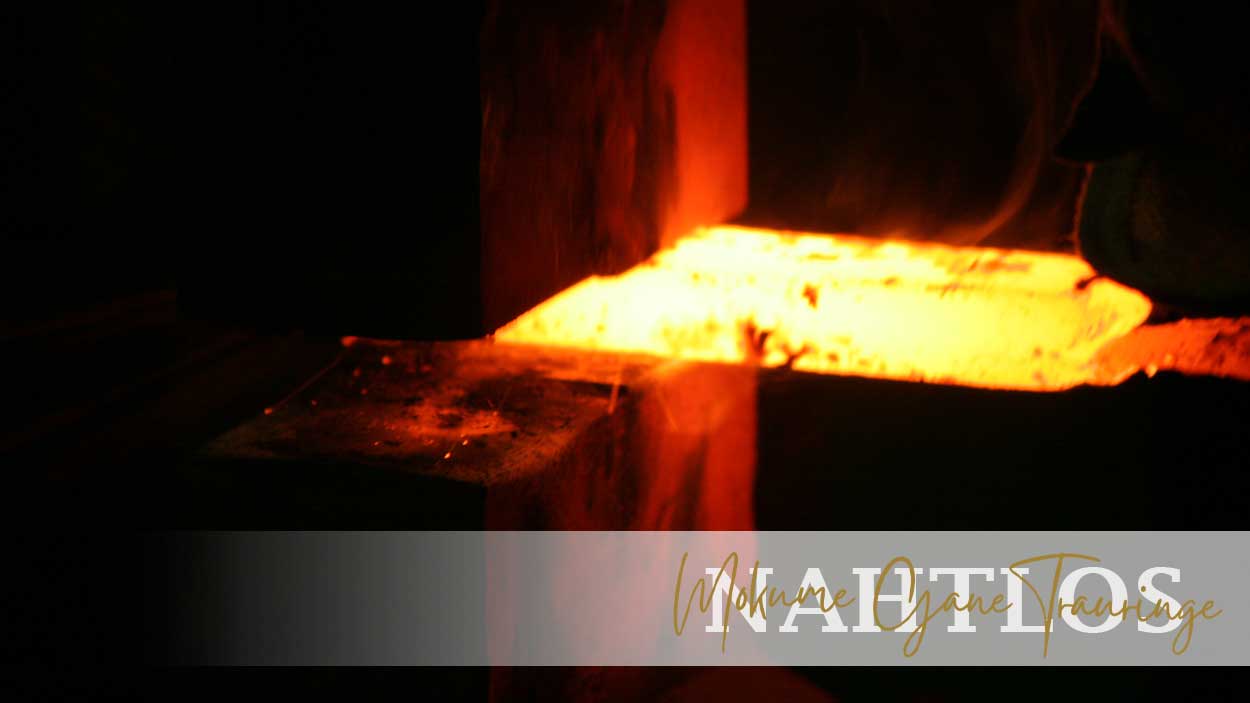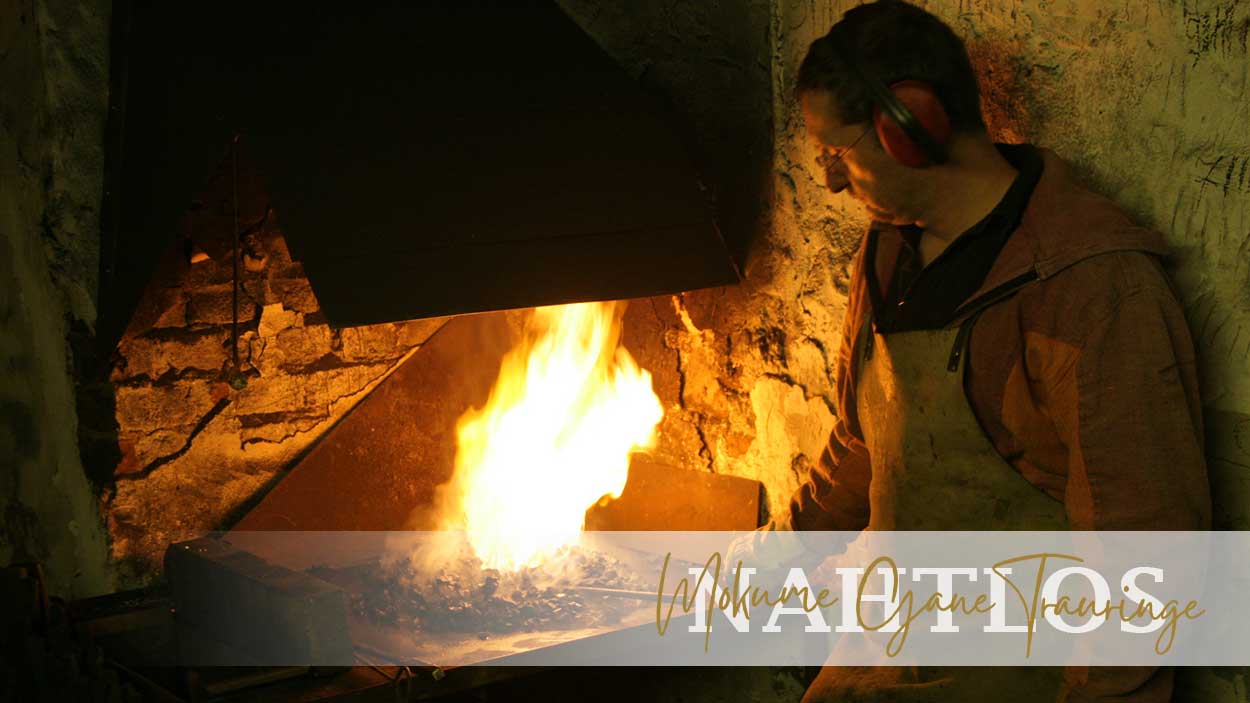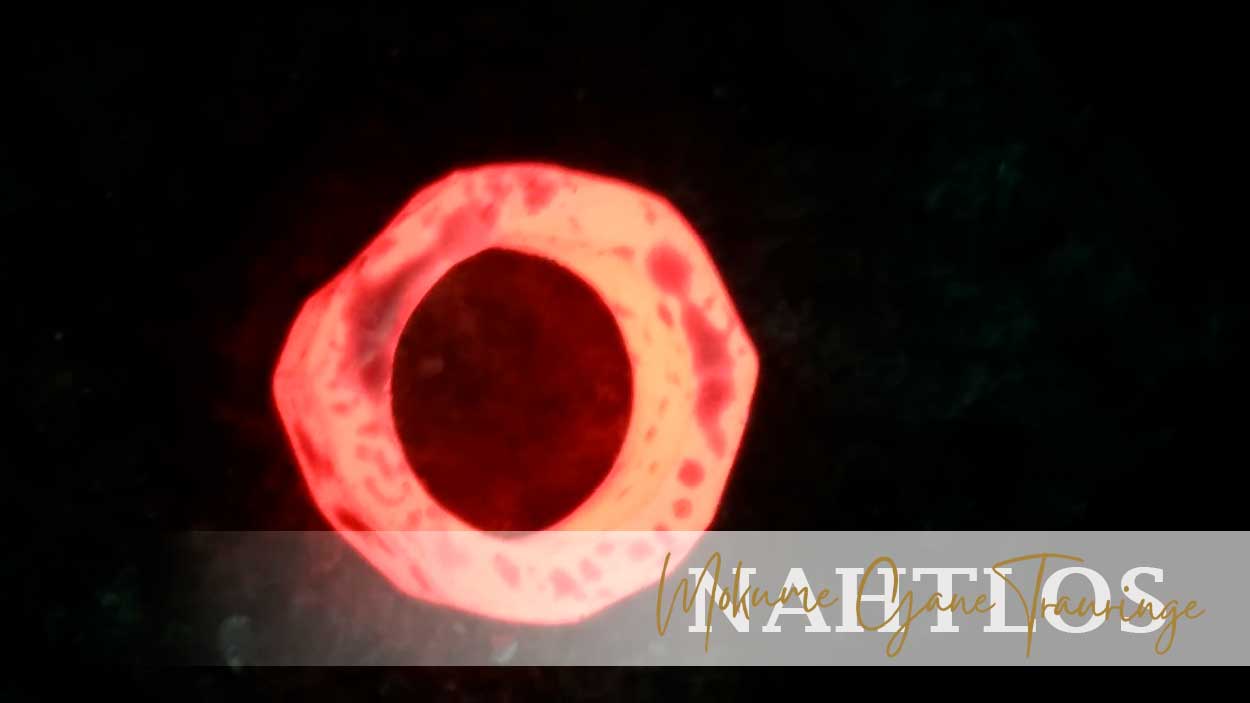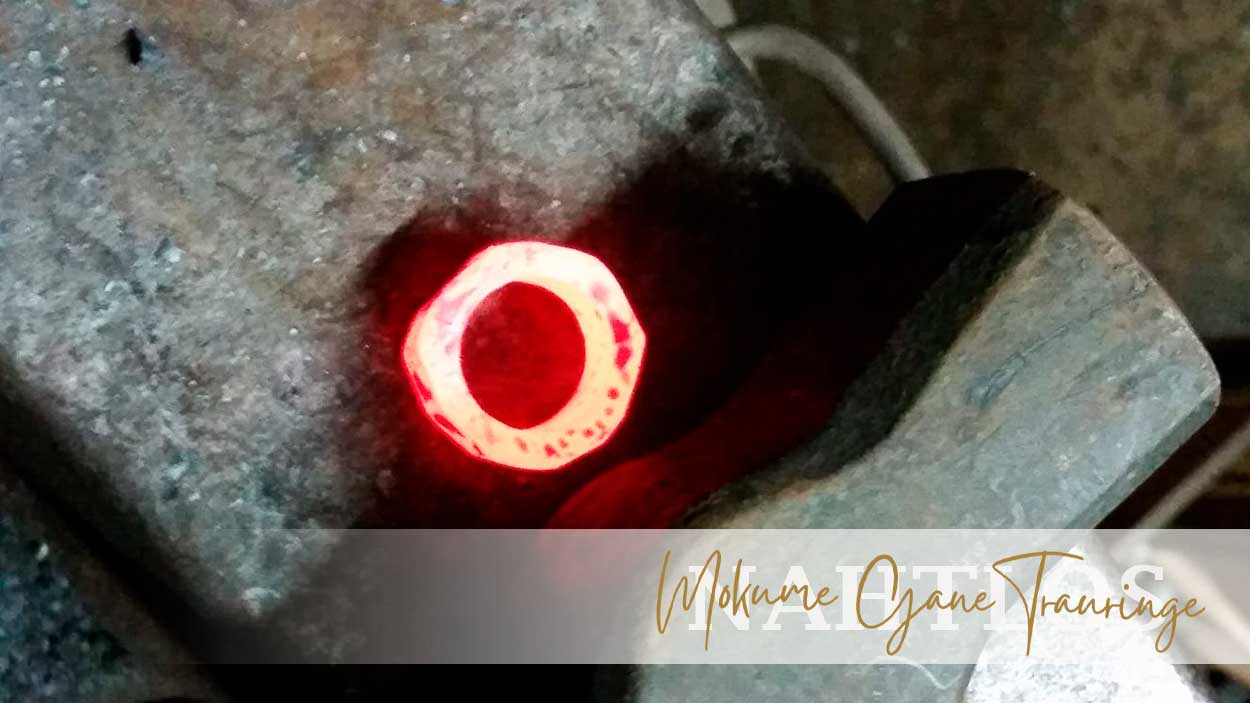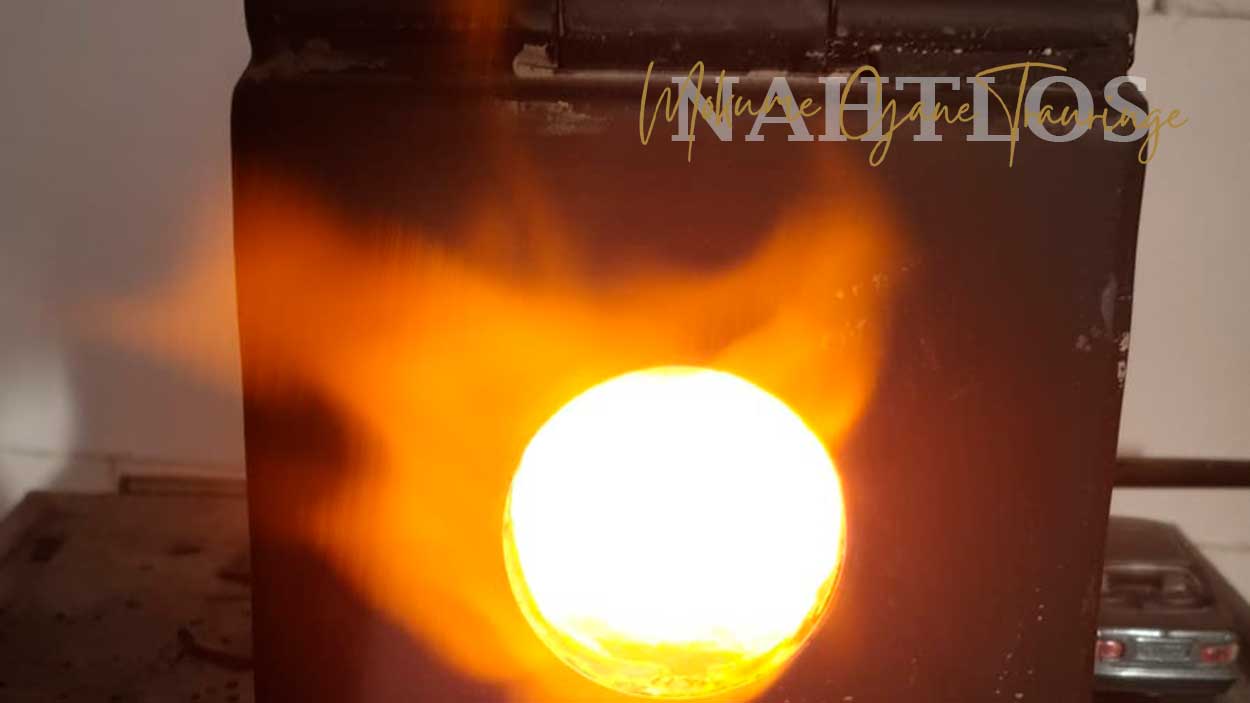Meteorite rings heaven and earth, forged by Martin Steinhorst
We were pleased to be able to commission meteorite rings for a couple from California in the USA from our damask smith Martin Steinhorst and send them across the pond. In cooperation with Martin, we have created a short production documentation below.
Briefly about the ring
The ring consists of race iron and meteorite.
Race iron is smelted from lawn iron ore in the race furnace.
The meteorite fell in Africa and is called Gibeon.
This is how a ring is created; forged from a piece of iron from the earth and a piece of iron from the infinite expanses of space.
We hope you enjoy browsing and find inspiration.
The meteorite ore, as well as the iron ore for the meteorite rings, is smelted in the racing furnace.
Damascus blacksmith Martin Steinhorst built a racing furnace especially for smelting meteorite and iron ore. This is where the ore for the meteorite rings is smelted.
Here you can see the upper part of the furnace from which the fire emerges
A nice close-up of the coke fire as it burns in the racing furnace
Another view of the chimney. The upper part of the racing furnace
Layering of the meteorite and iron. Alternating
Here you can see the block with the different layers of Damascus steel. The meteorite rings alternate between meteorite and iron.
Forge fire for the production of meteorite rings
The glowing block of layers is forged
The composite material is forged here with the forging hammer on the anvil.
The meteorite iron block in the forge fire
Nice to see the layers of the meteorite - iron composite material
Further forging with the air hammer
Dividing and folding the meteorite - iron block
Further forging with the air hammer
Martin Steinhorst at the forge fire forging the meteorite rings
The first shapes of a meteorite ring become visible
And here you can already see the first ring shape.
Meteorite Damascus ring on the anvil
The rings are repeatedly annealed in the gas furnace
Of course, there are also a few secrets about forging and making the meteorite rings that we don't want to show publicly here. :-)
Various links to informative websites on the subject of meteorites
The Meteorite Exchange is an interesting English-language site for meteorite collectors.
You will find links to meteorite dealers all over the world.
Meteorite Magazine is an English-language meteorite magazine
Meteoritecentral.com Internet portal about meteorites with mailing list
Mars meteorites, Dutch Meteor Society
German books about meteorites
F. Heide / F. Wlotzka, Kleine Meteoritenkunde, Springer Verlag, Heidelberg 1988 !
Schlüter, Meteorites: Stones of the sky, Ellert&Richter, Hamburg 1996
Rolf W.Bühler, Meteorite - Urmaterie aus dem interplanetaren Raum, Birkhäuser Verlag, Basel 1988 !
Ludolf Schultz, Planetologie - eine Einführung, Bechtermünz Verlag, Stuttgart2001
Unfortunately, these four German-language books will probably be the only ones,
, that you can currently find on the subject of meteorites in bookshops.
Books in English
The best book on meteorites ever: Richard Norton, The Cambridge Encycopedia or Meteorites, 2002 ! (at Amazon approx. 45 Euro) - the "bible" for meteorite friends.
Richard Norton, Rocks from Space, 2nd edition, 1998.
Monica Grady / Robert Hutchison, Catalogue of Meteorites, 5th edition, 2000
F. Heide / F. Wlotzka, Meteorites: Messengers from Space, Springer Verlag, Heidelberg

